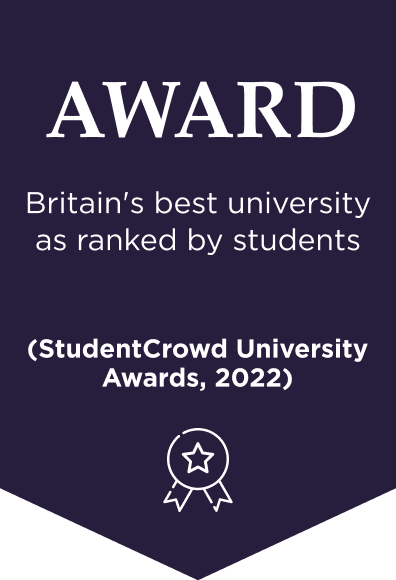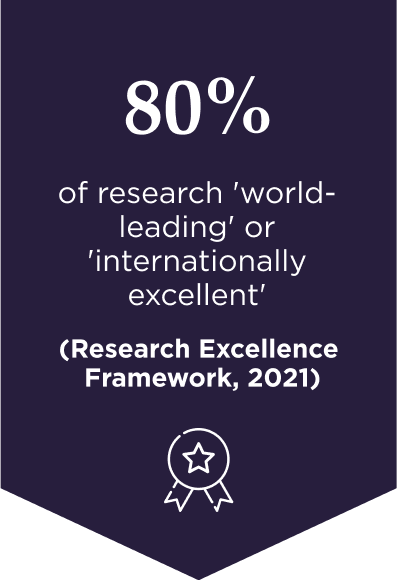The importance of embedding creativity in education
Posted on: April 14, 2022
Creativity in an educational context is often thought of in terms of creative subjects such as music, art, and drama. These subjects certainly nurture creativity, but creativity is an integral part of teaching and learning across all subjects. It involves an active curiosity when seeing something for the first time and how we react to it. Sometimes this involves an element of risk-taking, which can be developed in the safe environment of learning.
Cultivating creative thinking amongst students is highly dependent on creative leaders being visible within the learning and work environments. For this reason it’s important that creative leadership is evident from primary school to high school or college, and on into higher education. Creative thinking should be encouraged amongst all stakeholders and considered a valuable quality that initiates individuals into responding flexibly and adaptively in their problem-solving and decision-making.
Creative leadership during the Covid-19 pandemic
The ongoing impact of the global pandemic upon the learning environment and how educational institutions respond, means that the need for school leadership which takes a creative approach is greater than ever. In the introduction to the final report on the Creating Socially Distanced Campuses and Education Project launched by Advance HE, it is noted that there are five faces of transformational leadership that have come to the fore:
- Crisis leadership
- Courageous leadership
- Compassionate leadership
- Collaborative leadership
- Creative leadership
Elaborating upon creative leadership, Doug Parkin, Principal Adviser for Leadership and Management at Advance HE, says,
“The academic endeavour is at its core a creative one. Even very technical and rigorously precise research has a creative basis. From the most complex curriculum review challenge to the most wicked interdisciplinary research question, creativity and positivity unlocks human potential at every stage. It ignites ideas, inspires, and develops focus, commitment and energy. And leadership can and should complement this by being creative and using creativity as the basis for communication, positivity and engagement.”
He also quotes Kimsey-House et al when he writes “People are naturally creative, resourceful and whole.” This is an important point as people sometimes believe that they are not creative when being creative is an inherently human trait that often simply hasn’t been developed. Continued professional learning and development can support head teachers and staff in fostering creative processes so that they can use them both in their approach to management and their teaching practice.
Expressing creativity in teaching
Teacher creativity can be expressed through preparation and development, originality and novelty, fluency, freedom in thinking and acting, sensitivity to problems, and flexibility in finding alternative solutions to problems. School leaders and principals are key role models in promoting creativity in the education system and when they lead by example, it’s easier for creative learning to take hold amongst both teachers and students. Professor Louise Stoll from the UCL Centre for Educational Leadership states that, “Creative leaders…provide the conditions, environment and opportunities for others to be creative.”
No matter how many inputs and initiatives towards creative learning are suggested by staff or students, if headteachers do not embrace a creative methodology, the outputs will be subpar. For this reason, leadership development is also a critical factor in school improvement through creativity. Those who are creative know that a school culture in which stakeholders are always learning only leads to more creativity, and that creativity is itself a vital part of facilitating learning – it becomes a virtuous cycle.
An interesting case study that involved both pupils and teachers is that of Manorfield Primary School in Tower Hamlets. Head teacher Paul Jackson explained in an article in Headteacher Update,
“We engaged an architect to design us a model classroom that would put teaching and learning at the centre. Pupils and teachers worked with him on ideas. The idea was that if that worked, it would become a ‘lab’ where we tested things and if they worked we would roll it out elsewhere. Our children visited hotels and offices to get design ideas and then reported their ideas back to the architect. The result was the transformation of a previously cluttered classroom into a modern, light, and airy space and we’re now applying the lessons that we learned to the conversion of two redundant offices into a new, inspiring Key Stage 1 library area. I think it was a good example of using outside expertise to challenge our thinking.”
This kind of creative work is hugely beneficial to learners of all ages, but particularly to young minds. By involving them in the shaping of their environment, their opinions on high level decision-making are validated. The children are the ones who will primarily be learning in the school space, so letting them know that their input is important has a positive impact on their learning and sense of agency. When learning spans both the classroom and real-world scenarios, creativity can really come to fruition as students see the real-life effect of their decisions.
How important is creativity in education?
Creativity is sometimes referred to as one of the key competencies of the 21st century and is also intrinsic to sustainable development.
As the world increasingly faces challenges related to climate change, the education of the next generation is pivotal in helping to cultivate innovative thinking and problem solving to address sustainability issues. Creative education is not just a more fun and resourceful way of learning, it helps prepare children and young adults for creative work and the challenges of everyday life.
Take a creative approach with an MA Education Leadership and Management
The educational sector is changing in the wake of Covid-19 and the weak points that the pandemic restrictions exposed in the current structures of pedagogy. Educational leaders want their schools to be more resilient and their staff and students to be actively learning and collaborating beyond the restraints of traditional learning methodologies. When it comes to the success of remote learning, there are more dynamic ways to share information than simply through webinars, and creativity has shown how limits can be overcome.
If you’re looking for professional development that lets you consider these challenges of teaching and many more, while exploring creative leadership styles and leadership roles, a master’s in education could be for you. Find out more about the learning opportunities offered by a 100% online MA Education Leadership and Management and how you can register today.



